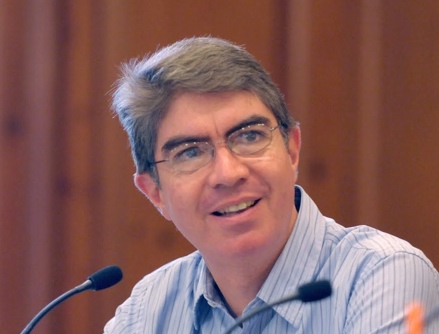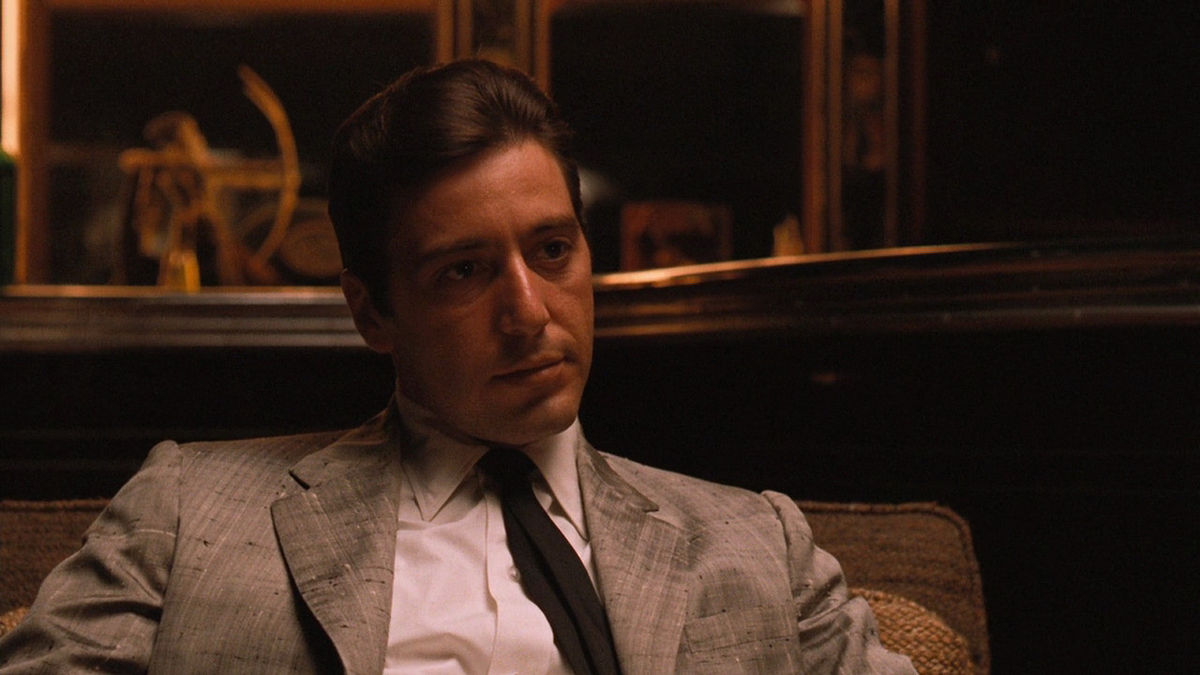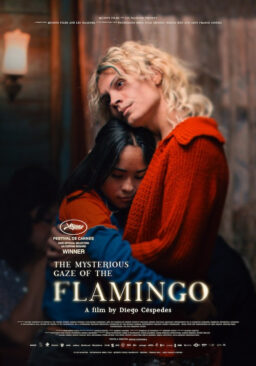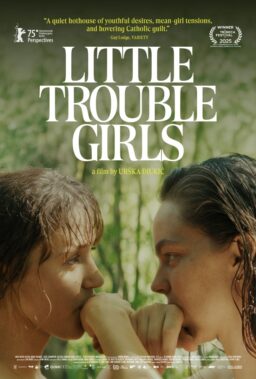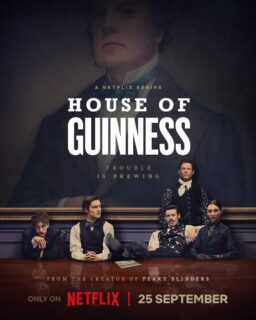What exactly makes “The Godfather, Part II” better than its predecessor?
“The Godfather, Part II” was the first film in the Godfather saga that I saw. This was perhaps a couple of years after it was first released. Knowing then very little about its predecessor and considering that the follow-up constantly jumps between time periods, it didn’t end up making all that much sense to me, but it raised enough curiosity to try to fill the voids, even if the only material available to me at that time was their Mad Magazine parodies. There’s just something about the protagonists of certain movies that makes it hard to shake them off—the Fast Eddie Felsons, the Vincent & Neils, the Red & Andys, and above all, the Corleones. “The Godfather, Part II” deals with the continuing story of that family, as new patriarch Michael tries to expand its many businesses. Director Francis Ford Coppola highlights the professional and personal challenges Michael has to face by contrasting them with those of his father in their very different times and cultures.
It wasn’t until the summer of 1980 that the original “Godfather” made another round in cinemas down here in Mexico. After all these years and dozens of viewings, I still find it to be as great as ever regardless of a few warts, such as the use of a bit too much stock footage (think of Tom Hagen arriving in the 1940s Hollywood, or Paulie, Rocco and Clemenza driving through New York) and the obvious use of stand-ins that don’t look all that much like the actors (like Hagen and Jack Woltz walking by the gardens of the latter’s mansion). Even though its financial success meant that the sequels wouldn’t have to suffer from similar budget limitations, the first Godfather clearly stands above them when it comes to background plot. I’ve always found the hounding of the Corleones by their enemies to be much more interesting than Michael doing business in Cuba just before the 1950s revolution in Part II, or him trying to wipe his family’s past clean by way of a real estate company in Part III. During my annual viewing of the sequel, at the stage of the first half, I invariably find myself missing the departed characters from the first entry during the good old days when the family was under siege from Sollozzo and the other families. In contrast, the discreet actions of Hyman Roth, whose evil intentions we never even get to hear on screen, tend to pale a bit. And yet, strangely enough, once my viewing of both movies concludes, the impact of the sequel is invariably stronger than that of its predecessor, leading me to wonder how it was ever possible for Coppola to be able to improve on the first film’s greatness, especially considering the handicaps he had to cope with.

The first factor, I believe, is that the director somehow managed to turn Part II’s weakness into strengths. For instance, few film series by nature have lost as many characters during their first entry. This list includes just about all of the family’s enemies along with Sonny, Tessio, Carlo, Paulie, Luca Brasi and above all, the central figure of Brando’s Vito Corleone. The latter was originally supposed to appear in the final reminiscing scene but somehow by that point, there’s a feeling that he has been present all along anyway. Perhaps this had to do with how Robert DeNiro was able to play the Brando character without missing a beat. The same problem should have applied in the sequel to the missing character Clemenza, whose part was basically taken over by Michael Gazzo’s Frank Pentangelli. He was even given the Don’s old home and was made to be a history buff just like Clemenza, though his absence from the decade long events of Part I is more than a little hard to buy. At the end, Gazzo’s Frankie “Five Angels” turned out to be just as memorable as his predecessor. His (on the surface) unremarkable conversation with Hagen that ends with the latter bidding him “Addio” (quite literally, as it turns out) is clearly one of the best moments of the series. Would it have helped if Brando had made his appearance in the end’s family reunion scene? Would the sight of Vito’s old caporegime at the Mafia Hearings, or dead in the bathtub have brought a feeling of full circle to the defeat of the family’s enemies? It’s hard to imagine otherwise in both cases but their substitutes turned out so well, we don’t end up longing for these alternatives all that much.
Still, when trying to assign each of these films their rightful place, the most important factor to consider is that they tend to be even more interesting when looking towards the interior of the family as opposed to when looking outside, and Part II comes second to none in this regard. The Cuba plot basically serves as a framework for the Corleone’s own conflicts and those conveyed in the sequel include much more interesting contrasts and facets. Down deep what makes the “Godfather” trilogy sublime are the unique bonds and occasional deep hate that can only fully take place between parents/children and their siblings, and no filmmaker before or since has been able to convey this with as much truth and resonance as Coppola (with Scorsese in “Raging Bull” coming second). This is one of the main reasons why the audience ended up seeing this particular family as their very own and it is also why the increasingly decaying Michael Corleone, perhaps even against Coppola’s best intentions, kept the audience’s sympathy until the very end of the series when he dropped dead in that Sicilian garden. Part I’s main focus was Vito’s extraordinary ability to deal with his enemies and how the most unexpected of his sons inherited such. The second movie went even further by conveying how Michael’s intelligence was not enough when it came to the inner workings of his own crumbling family.

Generally speaking, the first “Godfather” film can be considered flashier than the second, but when it comes to some of the series’ most valuable traits such as its stirring revelations, the impact of Michael listening to Fredo reveal himself accidentally as the family traitor in Part II is by no means any less shocking than that of the Don realizing who his true enemy had been all along in Part I. When it comes to unforgettable knowing glances, not even Kay’s realization that Michael has lied to her face at the end of Part I can match the seemingly conciliatory embrace that Michael gives Fredo, followed by the slightest of knowing nods at his bodyguard in what is clearly one of the great moments in movie history. Even Camine Coppola’s arrangements of Nino Rota’s music manage to improve the original film’s themes, resulting in what is my very favorite film soundtrack.
It is by considering another key problem with the controversial Part III that we can further appreciate what made Part II the best entry in the series. The characters we see early on the third “Godfather” barely reflect the logical evolution of those we left at the end of the second. For instance, what exactly prompted Michael to forgive Kay and seek a reconciliation (which ended up feeling so forced)? How could Connie accept the silly “drowning” excuse about Fredo “drowning” death? The answers to these questions seem to have been based more on casting choices and actor availabilities than on how their stories should have naturally played out. In contrast, this is one of the Part II’s greatest strengths. While watching such sequences as the superb conversation between Michael and Hagen about their bonds and life lessons (the “there’s a lot I can’t tell you Tom” dialogue) or by witnessing such seemingly small details as Vito going back to help the wounded friend who assisted him in his revenge plot, we come to better appreciate the roots of their deep loyalties. Additionally, the initial musings in the first movie about Michael promising Kay to eventually change and his warning of Fredo to never take sides against the family again, are followed through in the sequel to their full extent, in the latter case taking the series into fratricidal territory that not even the first movie could have ever imagined, proving that a sequel to “The Godfather” was something truly necessary. At the end of the day “The Godfather Part II” enhances our understanding and appreciation of the legendary characters presented in the original film. It surpasses it, in part, because it manages to make its predecessor even better.
